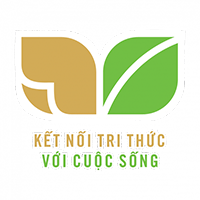Tiếng Anh 11 Global Success Unit 5 Communication and Culture/ CLIL
Tiếng Anh 11 Unit 5 Communication and Culture/ CLIL
Nằm trong bộ tài liệu Giải tiếng Anh 11 Kết nối tri thức theo từng Unit, Soạn tiếng Anh 11 Unit 5 Communication and Culture/ CLIL giúp các em chuẩn bị bài tập SGK tiếng Anh hiệu quả.
Everyday English
Giving and responding to warnings
1. Listen and complete the conversation with the expressions in the box. Then practice it in pairs.
(Nghe và hoàn thành cuộc hội thoại với các biểu thức trong hộp. Sau đó thực hành nó theo cặp)
Bài nghe

Gợi ý đáp án
|
1. D |
2. C |
3. B |
4. A |
Lời giải chi tiết
Linda: I was at the workshop at the ASEAN Youth Volunteer Conference. (1) C. You gave the best presentation!
(Tôi đã tham gia hội thảo tại Hội nghị Tình nguyện viên Thanh niên ASEAN. Bạn đã trình bày tốt nhất!)
Hoa: (2) A. I'm glad you like it, Linda. I worked really hard to prepare for it.
(Tôi rất vui vì bạn thích nó, Linda. Tôi đã làm việc rất chăm chỉ để chuẩn bị cho nó.)
Linda: It's was also well organised. And I noticed that your English has improved a lot. (3) D. It’s excellent.
(Nó cũng được tổ chức tốt. Và tôi nhận thấy rằng tiếng Anh của bạn đã được cải thiện rất nhiều. Nó là tuyệt vời.)
Hoa: Thank you. (4) B. I appreciate the compliment.
(Cảm ơn bạn. Tôi đánh giá cao lời khen.)
2. Work in pairs. Use the model in 1 to make similar conversations for these situations. One of you is Student A, the other is Student B. Use the expressions below to help you.
(Làm việc theo cặp. Sử dụng mô hình trong phần 1 để tạo các hội thoại tương tự cho các tình huống này. Một trong số các bạn là Học sinh A, người kia là Học sinh B. Sử dụng các biểu thức dưới đây để giúp bạn)

Gợi ý đáp án
1. Student A is burning rubbish. Student B is warning him/her about the dangers of open waste burning to people's health and the environment.
Student A: Hey, have you seen me burning some rubbish here?
Student B: Yeah, I see that. But do you know that burning waste like that can be dangerous to people's health and the environment?
Student A: Really? How come?
Student B: When you burn waste like that, it releases harmful toxins into the air, which can cause respiratory problems and other health issues. It can also harm the environment and pollute the air and soil.
Student A: Oh, I had no idea. Thanks for letting me know. I'll stop doing it and find a proper way to dispose of my waste.
2. Student B is building a campfire. Student A is warning him/her about the risk of starting a forest fire and the health risks.
Student B: Hey, I'm building a campfire. Do you want to join me?
Student A: Sure, but be careful. Starting a fire in a forest can be risky, especially if it's dry and windy.
Student B: Don't worry, I know what I'm doing.
Student A: But even a small spark can start a big forest fire, which can be difficult to control and cause a lot of damage. It's also not safe for our health, as the smoke can cause respiratory problems.
Student B: I see your point. Maybe we should find a safer spot to make a fire or just use a portable stove instead.
CLIL
1. Read the text and tick (√) the pictures that show ways to reduce global warming.
(Đọc văn bản và đánh dấu (√) vào những bức tranh chỉ ra những cách để giảm sự nóng lên toàn cầu)

Gợi ý đáp án
|
1. √ |
2. |
3. |
4. √ |
5. |
Hướng dẫn dịch bài đọc
GIẢM THIỂU TÁC ĐỘNG MÔI TRƯỜNG CỦA CHĂN NUÔI
Nông nghiệp cung cấp cho chúng ta thực phẩm mà chúng ta ăn hàng ngày. Nhưng các hoạt động canh tác cũng có tác động nóng lên mạnh mẽ đối với nhiệt độ toàn cầu. Tin tốt là các chuyên gia đã bắt đầu nghĩ về cách giảm nó.
Chăn nuôi động vật trang trại như bò, dê và cừu làm cho hành tinh nóng hơn. Có hàng tỷ trong số chúng và chúng giải phóng khí mê-tan, một loại khí nhà kính nguy hiểm hơn nhiều so với carbon dioxide. Đó là lý do tại sao các nhà khoa học đang phát triển mặt nạ bắt khí mê-tan cho bò. Chúng nhằm mục đích giảm lượng khí thải mêtan lên tới 50% cho mỗi con bò.
Một hoạt động nông nghiệp khác làm nóng bầu không khí là trồng lúa. Theo nghiên cứu, khí thải từ các trang trại lúa có tác động làm ấm tương tự như khoảng 600 nhà máy điện than. Ruộng lúa bị ngập nước cũng tạo điều kiện cho vi khuẩn trong đất tạo ra khí nhà kính. Các phương pháp canh tác mới đã cho phép lúa phát triển tốt trên những cánh đồng khô hạn hơn, hạn chế lượng khí nhà kính, sử dụng ít nước hơn và cho năng suất vụ mùa tốt hơn.
Ngoài ra, việc sử dụng đất làm tăng nhiệt độ toàn cầu. Thực vật và cây cối sử dụng CO2 để phát triển và lưu trữ một lượng lớn carbon dưới lòng đất. Chặt phá hoặc đốt rừng để tạo ra các cánh đồng nông trại và đất để nuôi động vật thải ra hàng tấn carbon dioxide và các khí nhà kính khác vào bầu khí quyển mỗi năm. May mắn thay, nhiều quốc gia và các nhà lãnh đạo thế giới đã đồng ý bảo vệ rừng và chấm dứt nạn phá rừng.
Nói tóm lại, có một số dấu hiệu tích cực cho thấy nông dân có thể đáp ứng những thách thức về môi trường. Tuy nhiên, mặc dù tác động của canh tác nông nghiệp đối với nhiệt độ toàn cầu đã giảm, nhưng vẫn còn nhiều việc phải làm.
2. Work in groups. Discuss the following questions.
(Làm việc nhóm. Thảo luận các câu hỏi sau)
What farming activities in Viet Nam do you think have negative impact on the global temperature? What do you think are the alternatives to those activities?
Gợi ý đáp án
There are several farming activities in Vietnam that can have a negative impact on the global temperature, including:
1. Rice cultivation: Rice cultivation is a major source of greenhouse gas emissions, primarily due to the production of methane during the decomposition of organic matter in flooded rice paddies.
2. Livestock production: Livestock production, particularly from cattle and buffalo, is a significant contributor to greenhouse gas emissions through the production of methane from enteric fermentation and manure management.
3. Pesticide use: Pesticide use in agriculture can lead to the emission of greenhouse gases, particularly nitrous oxide, as well as contribute to soil degradation.
4. Deforestation: Deforestation for agriculture, particularly for expanding rice paddies or livestock grazing areas, can contribute to the release of carbon dioxide into the atmosphere.
To address these negative impacts, some alternatives that can be considered include:
1. Sustainable rice cultivation: Alternative rice cultivation methods, such as aerobic rice cultivation or the use of alternate wetting and drying methods, can significantly reduce methane emissions from rice paddies.
2. Improved livestock management: Improved livestock management practices, such as better feeding and manure management, can reduce the emissions of methane and other greenhouse gases.
3. Organic farming: Organic farming practices, including the use of natural pest control methods and composting, can reduce the use of pesticides and fertilizers, as well as promote soil health.
4. Forest conservation and reforestation: Conservation and reforestation efforts can help to reduce the release of carbon dioxide from deforestation and promote carbon sequestration in new forest areas.
Overall, a shift towards sustainable agriculture practices and land use management can help to mitigate the negative impacts of farming activities on the global temperature.
Xem tiếp: Soạn tiếng Anh 11 Global Success Unit 5 Looking back MỚI
Trên đây là Soạn tiếng Anh 11 Global Success Unit 5 Communication and Culture/ CLIL đầy đủ nhất.








